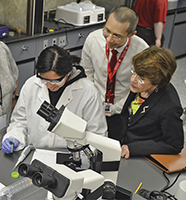One District’s Path: Turnaround or Takeover
August 01, 2021
Five lessons shared by the superintendent who led the effort to resuscitate a failing system

Principals commonly share stories about their efforts turning around teaching and learning in their schools. School district stories reflecting big-picture turnaround ideas are more difficult to capture and summarize.
District scope, complexity
and an ever-changing context reduces the “how” of turnaround work to dense plans that cause superintendents to get lost in myriad details that can mitigate their leadership skills. In 2013, I learned the extent of that challenge when I
became superintendent for the New Bedford Public Schools, a struggling urban district on Massachusetts’ south coast. With 13,000 students, it is the state’s sixth-largest district.
Upon my entry, eight of the 25 schools had
no principal and those in place had not been evaluated in years. The state-mandated teacher evaluation system had been adopted, but with weak supervisory feedback, instructional improvement in the district was minimal. Teaching materials were either
hopelessly outdated, as in a decade-old reading program, or unavailable for math and science, leaving teachers on their own. Technology and the arts were limited in most schools and nonexistent in others.
In addition, elementary students
lost 90 minutes of weekly instruction due to a long-standing agreement with the teachers’ union that dismissed students early on Fridays so teachers could have planning time. The burgeoning population of English learners was woefully under-reported
due to limited testing, which resulted in the employment of only two English as a second language teachers in a district where about 23 percent of the students’ first language at the time was not English.
Affecting every aspect of
the district was the operating budget’s $3 million shortfall, discovered in the middle of the 2013-14 school year, leading to the elimination of 150 staff positions and no plan for how that work would get done in the coming year.
The
then-commissioner of education, Mitchell Chester, was publicly considering a state takeover of New Bedford, while a newly elected mayor was calling for major reform. With the clock ticking, I struggled how to begin. I had to focus energy and effort
on the right work to directly change how schools worked.
This Content is Exclusive to Members
AASA Member? Login to Access the Full Resource
Not a Member? Join Now | Learn More About Membership
Advertisement
Advertisement
Advertisement
Advertisement



.png?sfvrsn=3d584f2d_3)